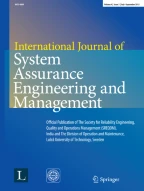Abstract
Due to the exponential growth in the automobile industry, we need intelligence transportation system. Vehicular ad-hoc network (VANET), a part of the intelligence transportation system is the network created by vehicles. Security is the main issue in vehicular ad-hoc network. Many intruders try to use the vulnerability presents in the vehicular network. In VANET communication between two nodes, may involves multiple intermediate nodes to forward the data due to low transmission range. The intermediate nodes must be trustworthy enough to be a part of the communication process. Rogue or malicious nodes can accept the data and drop the data in between source to destination. In this paper, we proposed a trust based model to detect rogue nodes in a vehicular network. The proposed model first estimates the trust value of the nodes and based on that identifies the rogue nodes in the network. We select only trustworthy nodes to relay the data in the routing process. The simulation and performance evaluation of the proposed model performed with the help of network simulator (NS-2). We evaluate the performance of the network based on the four performance matrices i.e. successful packet delivery fraction, throughput, routing load and end to end delay. The simulation result shows that the proposed model enhances network performance significantly.
Similar content being viewed by others
References
Arya KV, Tripathi KN (2013) Power aware and secure routing in mobile and ad-hoc networks. In: 2013 IEEE 8th international conference on industrial and information systems, pp 477–482
Bedi P, Jindal V (2014) Use of big data technology in vehicular ad-hoc networks. In: International conference on advances in computing, communications and informatics (ICACCI), pp 1677–1683
Eiza MH, Ni Q, Owens T, Min G (2013) Investigation of routing reliability of vehicular ad hoc networks. EURASIP J Wirel Commun Netw 1(1):179
Issariyakul T, Hossain E (2009) Introduction to network simulator 2 (NS2). In: Introduction to network simulator NS2. Springer, Boston, pp 1–18
Kerrache CA, Calafate CT, Lagraa N, Cano JC, Manzoni P (2016a) Hierarchical adaptive trust establishment solution for vehicular networks. In: 2016 IEEE 27th annual international symposium on personal, indoor, and mobile radio communications (PIMRC), pp 1–6
Kerrache CA, Lagraa N, Calafate CT, Lakas A (2016b) TFDD: a trust-based framework for reliable data delivery and DoS defense in VANETs. Veh Commun 1(9):254–267
Khan U, Agrawal S, Silakari S (2015) Detection of malicious nodes (DMN) in vehicular ad-hoc networks. Procedia Comput Sci 1(46):965–972
Khan FA, Imran M, Abbas H, Durad MH (2017) A detection and prevention system against collaborative attacks in mobile ad hoc networks. Future Gener Comput Syst 1(68):416–427
Krajzewicz D, Hertkorn G, Rössel C, Wagner P (2002) SUMO (simulation of urban mobility)—an open-source traffic simulation. In: Proceedings of the 4th middle east symposium on simulation and modelling (MESM20002), pp 183–187
Kumar N, Chilamkurti N (2014) Collaborative trust aware intelligent intrusion detection in VANETs. Comput Electr Eng 40(6):1981–1996
Kumar PV, Maheshwari M (2014) Prevention of Sybil attack and priority batch verification in VANETs. In: International conference on information communication and embedded systems (ICICES 2014), pp 1–5
Kumar V, Mishra S, Chand N (2013) Applications of VANETs: present & future. Commun Netw 5(01):12
Li W, Song H (2016) ART: an attack-resistant trust management scheme for securing vehicular ad hoc networks. IEEE Trans Intell Transp Syst 17(4):960–969
Lim K, Manivannan D (2016) An efficient protocol for authenticated and secure message delivery in vehicular ad hoc networks. Veh Commun 1(4):30–37
Ltifi A, Zouinkhi A, Bouhlel MS (2015) Trust-based scheme for alert spreading in VANET. Procedia Comput Sci 1(73):282–289
Lu Z, Qu G, Liu Z (2018) A survey on recent advances in vehicular network security, trust, and privacy. IEEE Trans Intell Transp Syst 23(99):1–7
Mokdad L, Ben-Othman J, Nguyen AT (2015) DJAVAN: detecting jamming attacks in vehicle ad hoc networks. Perform Eval 1(87):47–59
Pham TN, Yeo CK (2018) Adaptive trust and privacy management framework for vehicular networks. Veh Commun 13:1–2
Pooja B, Pai MM, Pai RM, Ajam N, Mouzna J. (2014) Mitigation of insider and outsider DoS attack against signature based authentication in VANETs. In: 2014 Asia-Pacific conference on computer aided system engineering (APCASE), pp 152–157
Saleh AI, Gamel SA, Abo-Al-Ez KM (2017) A reliable routing protocol for vehicular ad hoc networks. Comput Electr Eng 1(64):473–495
Sedjelmaci H, Senouci SM, Abu-Rgheff MA (2014) An efficient and lightweight intrusion detection mechanism for service-oriented vehicular networks. IEEE Internet Things J 1(6):570–577
Sharma S, Chang V, Tim US, Wong J, Gadia S (2019) Cloud and IoT-based emerging services systems. Cluster Computing 22(1):71–91
Singh A, Sharma P (2015) A novel mechanism for detecting DOS attack in VANET using enhanced attacked packet detection algorithm (EAPDA). In: 2015 2nd international conference on recent advances in engineering & computational sciences (RAECS), pp 1–5
Tyagi P, Dembla D (2016) Performance analysis and implementation of proposed mechanism for detection and prevention of security attacks in routing protocols of vehicular ad-hoc network (VANET). Egypt Inform J 18(2):133–139
Wahid A, Yasmeen H, Shah MA, Alam M, Shah SC (2019) Holistic approach for coupling privacy with safety in VANETs. Comput Netw 148:214–230
Yao X, Zhang X, Ning H, Li P (2017) Using trust model to ensure reliable data acquisition in VANETs. Ad Hoc Netw 1(55):107–118
Zaidi K, Milojevic MB, Rakocevic V, Nallanathan A, Rajarajan M (2016) Host-based intrusion detection for vanets: a statistical approach to rogue node detection. IEEE Trans Veh Technol 65(8):6703–6714
Author information
Authors and Affiliations
Corresponding author
Ethics declarations
Conflict of interest
The authors declare that they have no conflict of interest.
Additional information
Publisher's Note
Springer Nature remains neutral with regard to jurisdictional claims in published maps and institutional affiliations.
Rights and permissions
About this article
Cite this article
Tripathi, K.N., Sharma, S.C. A trust based model (TBM) to detect rogue nodes in vehicular ad-hoc networks (VANETS). Int J Syst Assur Eng Manag 11, 426–440 (2020). https://doi.org/10.1007/s13198-019-00871-0
Received:
Revised:
Published:
Issue Date:
DOI: https://doi.org/10.1007/s13198-019-00871-0
